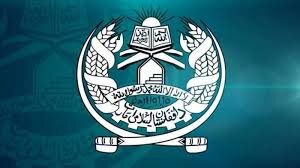The return of Taliban rule after 20 years will likely produce the typical mayhem and murder when a regime suddenly collapses. Longer-term, immense challenges face the people of Afghanistan under the “Islamic Emirate” and, externally, the takeover will intensify a host of international military, security, political and humanitarian problems.
But much is also at stake for world Islam, a crucial aspect that the media have tended to slight thus far, as tmatt has already observed here at GetReligion. Journalists may be witnessing a new phase in what Georgetown University expert John Esposito has called a long-running “struggle for the soul of Islam.”
The fallout could last for years, or even a generation, because it will be highly difficult to again dislodge Taliban control — from within or without.
Though plans are unknown, Afghanistan’s rulers may well reimpose harsh practices that had provoked widespread condemnation (without, however, losing religiously freighted diplomatic recognition by Saudi Arabia). And they could again provide a strategic national sanctuary from which terrorists could target innocent civilians in the despised West.

The key, of course, is that all this would be proclaimed as God’s will, enacted in the name of Islam and for its benefit. The Taliban announce religious zeal for a strict construction of Islam’s dominant Sunni branch in their very name, which derives from “student” in the Pashto language.
Militant movements that include the Taliban have achieved special appeal for youthful Muslim devotees and some government backing. They have variously claimed religious sanction for destruction of historic artifacts, torture, mutilation, beheading and stoning to death, execution without trial, kidnaping for ransom, forced marriages and sexual slavery, drug trafficking and thievery, killing of envoys and charity workers, and persecution not only of Christians and Jews and Yazidis but even moreso of fellow Muslims who dissent (see scholar Paul Marshall’s book “Silenced: How Apostasy and Blasphemy Codes are Choking Freedom Worldwide“). Not to mention banning music and movies, kites and dolls.
The most severe consequences have fallen upon Muslim girls and women, not merely put under strict clothing mandates, but denied human rights, education beyond age 10 or careers outside the home.
Much of this is a frontal challenge to morality and law as taught by Islamic authorities for centuries or recommended as legitimate concessions to modern realities. And yet, as The Atlantic‘s Graeme Wood wrote of the Islamic State in 2015, radical Muslims can build upon precedents set by believers during Islam’s founding period.
The dangers facing Islam are both divisive internal strife among feuding factions and a loss of moral stature that could become an all-but-ineradicable stain upon the faith unless its internal dynamics change.
For one thing, Islam lacks a universal, centered source of authority such as Catholicism’s papacy, or even the sort of looser policy consensus defined by Protestant or Jewish assemblies.
In earlier articles, The Guy explored the nagging problem of who speaks authentically for the religion in this era of terrorism. See “Who speaks for Islam in a time of terrorism?”, “Another loaded question in the news: What does Islam teach about violence?” and “Religion, morality and terrorism: How do IRA Catholics compare with ISIS Muslims?”
Authorities of high Islamic status have bemoaned the chaos of recent times, but with little heed among either rank-and-file Muslims or, tragically, many news outlets.
As in the wake of 9/11, some Americans may be tempted to cast unwarranted aspersions upon Muslim neighbors who have nothing to do with violence and oppression overseas. Future domestic terror attacks would only worsen this temptation.
Thus the challenge for the media. Journalists have a duty to report candidly on ongoing atrocities. But will they work to put these events within a broader Muslim context? Or will they give audiences an outlook that would be like depicting the entirety of Christianity in terms of the 20th Century’s Catholic-Protestant conflict confined to Northern Ireland or of Europe’s religious wars that ended centuries ago?
Putting a spotlight on these competing flocks inside Islam would also require the bulk of the world’s Muslim leaders and believers to emphatically unify around a form of Islam that builds upon the Holy Quran to respect modern democracy and human rights and to live comfortably alongside those who follow a variety of religious paths.
FIRST IMAGE: The Taliban symbol, used as a graphic by Khaama Press.










